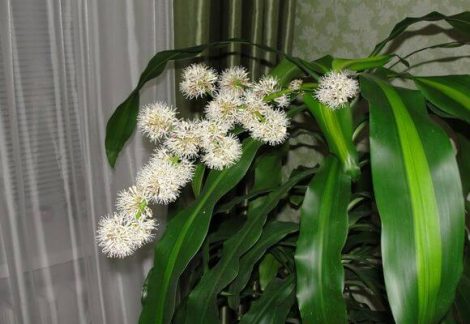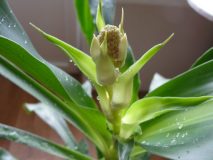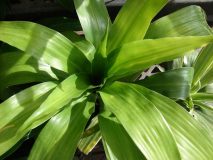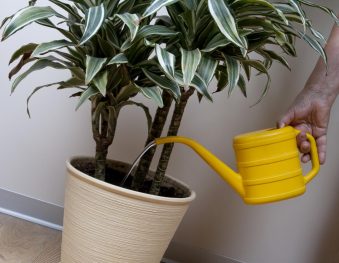In translation, the name of the genus Dracaena fragrant means "female dragon." In tropical countries, some species grow into huge beautiful trees. If the bark is damaged, red juice, similar to blood, is secreted, hence the strange name of the plants.
Material Content:
Fragrant Dracaena: variety description
Fragrant dracaena flowers emit a pleasant aroma. Its peduncle reaches one meter in height. The plant has a tall and unstable stem, which resembles a small palm tree with a bunch of leaves at the top.
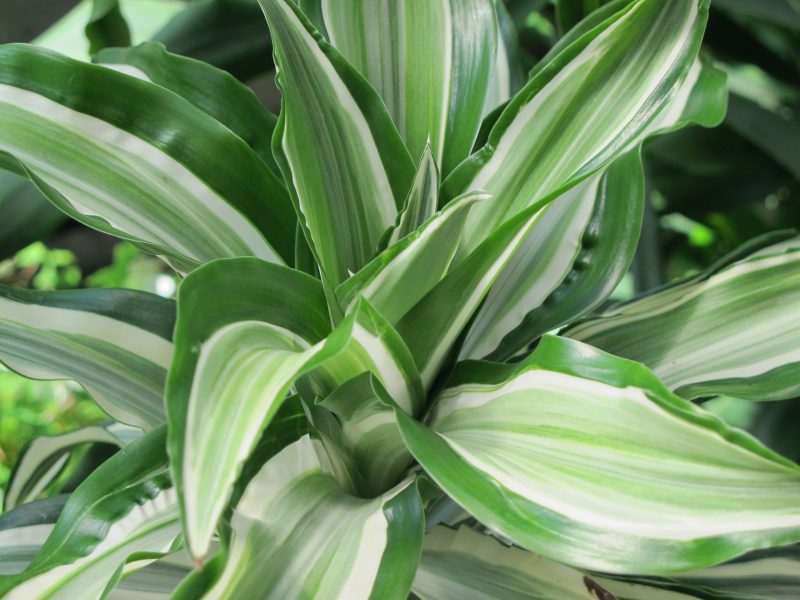
The following plant varieties are distinguished:
- Massangeana. It grows to a meter and a half in height, the leaves are light green with a yellow stripe in the middle.
- Surprise. A low-growing variety, grows only up to 20 cm in height.
- Cintho. An adult plant looks like a thin-bore palm. It grows to a meter and a half in height, with a bunch of narrow leaves at the top.
- Kerry Compact tree with green and light green leaves.
- Compact. A tall variety similar to a palm tree. The leaves are dark green;
- Victoria. Light yellow foliage with a green stripe in the middle.
- Alobeka. Tall variety with dark green leaves with yellowish-green stripes.
The leaves of some varieties of plants can reach 10 cm in width, they are curved by arches and crowded in the upper part of the trunk.
The nuances of growing fragrant dracaena
Dracaena is unpretentious. It is easy to grow and easy to reproduce. If two trunks grow in a pot, one can be inhibited and soon perish. Therefore, after the purchase, it is better to plant the shoots in separate pots.
The plant requires minimal care, in good conditions it can grow at home for more than 15 years.
Home Care
The quality of care for an adult plant can be judged by the number of leaves preserved in the lower part of the shoot. If there are a lot of them, then the care was good.
For the plant, proper watering, fertilizing, transplanting, moist air and good lighting are important.
Temperature, humidity and lighting
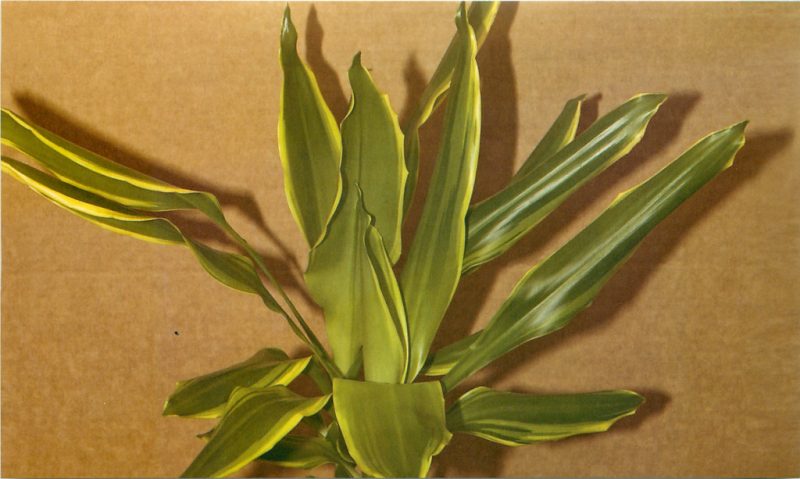
- Dracaena is photophilous, but if it stands near the southern windows, it requires shading at noon, otherwise burns may remain on the leaves. Cirrus leaf varieties require more light to maintain a vibrant color.
- To make the plant grow even, it is turned in different directions to the light. The source of illumination can be a fluorescent lamp, for dracaena this does not play a special role.
- In winter, the temperature should not be lower than + 12 ° C, in summer - up to + 25 ° C.
- The plant does not like drafts and sharp fluctuations in temperature.
Watering a plant
Water-hungry dracaena is advisable to water often, especially in the warm season. The pot with the plant should have loose soil and good drainage so that all excess water can drain through the holes in the bottom of the pot and does not stagnate in the soil. Excess water is poured from the pan. The earth is loosened so that the roots can breathe and develop normally.
It is advisable to take urban water for irrigation. Even better if the water is spring, melt, rain or filtered.
- In summer, the plant is watered 1 time in 2 or 3 days.
- In winter, they do this less often - 1 or 2 times a week.
- You can spray the leaves with warm water daily.
A sign of excessive air dryness in winter is the yellowed ends of dracaena leaves. If the plant is not far from the radiator, daily foliage spraying continues in the winter.
Fertilizer and fertilizer
Plant nutrition needs the entire warm period, from spring to late autumn, 1 time in 10 days. Mineral fertilizers are suitable for indoor decorative foliage crops. Organic store-based fertilizers with peat, chicken droppings or manure can be used.
Transplant and pruning
It is advisable to transplant the plant in the spring, in March or early April, so that it begins to grow as quickly as possible. Timely transplantation prolongs life.
- A powerful root system requires an increase in landing capacity during annual transplants by several centimeters.
- An expanded clay layer is necessarily placed at the bottom.
- There should be several openings at the bottom of the pot to maximize the removal of excess moisture from the soil.
Having bought a new plant in the store, it is transplanted a month after the acquisition. It is necessary for dracaena to get used to the new microclimate of the room, lighting.
For a plant about half a meter high, you need a pot of at least 20 cm in diameter. Transplanting soil is universal. It should be loose, good water and air permeability. In flower shops you can also find special primers for dracaena. The soil mixture is prepared independently from equal parts of peat, sand, turf, leafy soil and humus.
As the stem grows, leaves can only remain at its apex. This reduces the decorative qualities of dracaena. In spring, the trunk is cut so that shoots begin to grow from the side buds. The cut off top is rooted in a separate flower pot. The slice must be treated with charcoal and Zircon.
Care after flowering
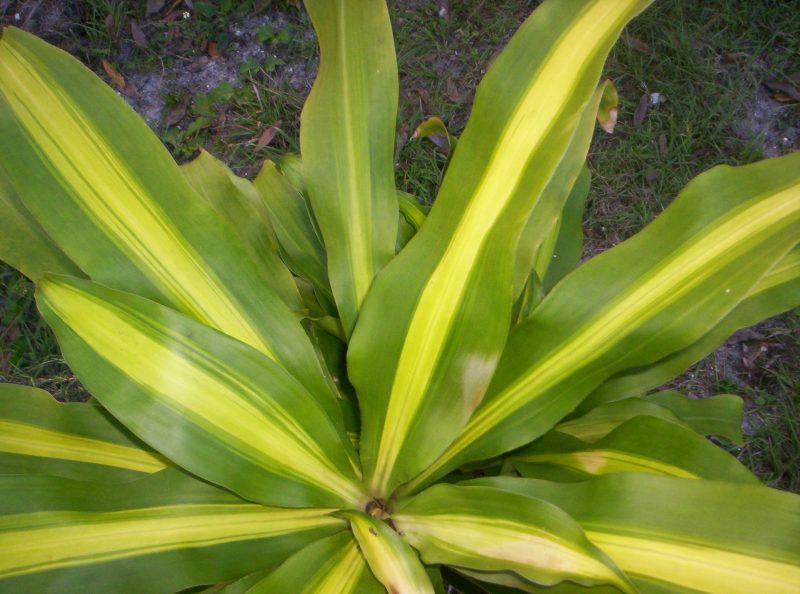
In indoor conditions, the flowering of fragrant dracaena is a unique phenomenon. In the wild, this happens once every 10 years. A long panicle inflorescence with white or yellow-green fragrant flowers opens at night. After flowering, the dracaena trunk begins to expand in a circle.
Flowering takes away a lot of energy from the plant, so the seeds are not allowed to ripen. Immediately after flowering, the flower stalk is cut off, and the dracaena is fed with complex mineral fertilizers.
Reproduction of fragrant dracaena
Fragrant Dracaena propagated by shoots.This may be the tip of an adult plant that has been pruned or a young side shoot. Shoots are easily rooted in water or light soil substrate.
What to do if fragrant dracaena has broken
If the plant has an unstable central stem, a support is placed next to it in the ground. A broken plant also has a chance of further existence. The top of the shoot is placed in water or soil for rooting. The remaining trunk is trimmed with a clean sharp knife and sprinkled with a cut of wood ash.
Pests, diseases and methods of dealing with them
On dracaena, you can find the nails, which appear with a strong overmoistening of the soil. From the street or from a flower shop with new decorative flowers, you can bring home spider mites, thrips or scale insects.
- Infection with scabies is noticeable by the formation of brown plaques on the leaves and trunk.
- A spider mite is visible on a thin web tangling leaves.
- Thrips leave light spots and stains on the greenery.
Having seen the signs of the disease, it is advisable to immediately treat the Dracaena with an insecticide. From spider mite, Fitoverm or another acaricide is used.
Many diseases of dracaena are caused by improper care. Having noticed the yellowing of the leaves, it is necessary to check the humidity of the substrate in the pot - it may be too dry or too wet.
If the substrate is moist, does not dry out for a long time and there is an unpleasant odor from it, dracaena needs to be transplanted urgently, it has begun to rot the roots. The root system is cleaned of soil, washed under running water, treated with fungicide, and then planted in fresh soil.
Dracaena will give the room an exotic look, will please with unpretentious care and lush greenery. Experienced flower growers can even achieve flowering and make truly unique photos.


